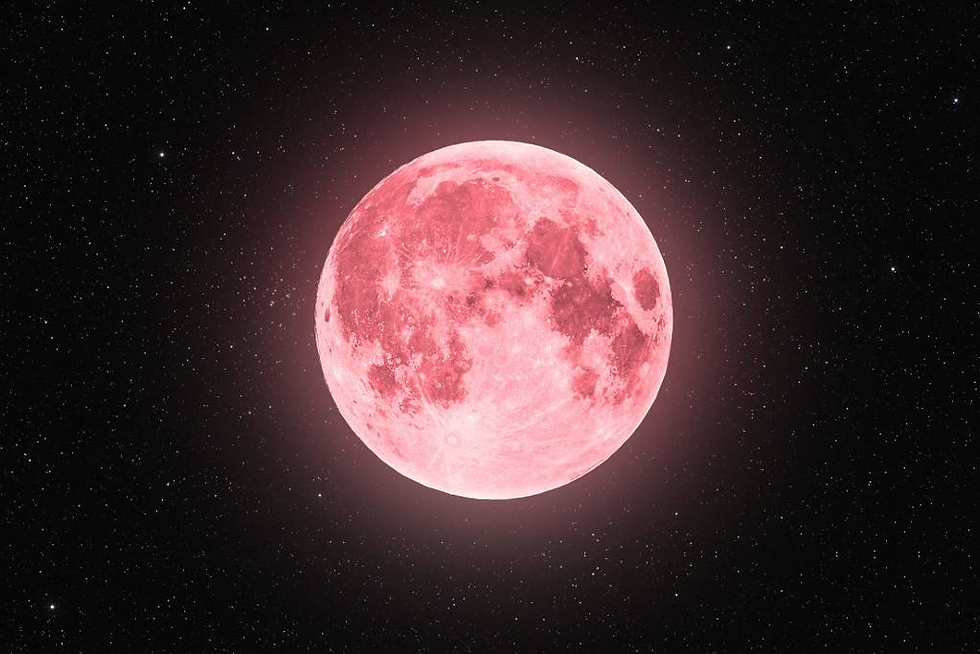June 2025: A Celestial Showcase for Indian Skies
- ARC EDUCATORS
- May 26
- 5 min read
June 2025 is a cosmic party in every sense of the word. From brilliant planets shining brightly at dawn and dusk, through the peaceful light of the Full Strawberry Moon, this month calls on amateur astronomers from all over India to look up and reconnect with the heavens above. Though eclipses don't crop up this month, 2025's eclipse season falls in March and September; June's night sky remains full of astronomical delights nonetheless. Let’s take a tour of the Indian night sky this June, weaving science and storytelling into your celestial guide.
Venus and Mercury: Dawn and Dusk’s Planetary Jewels
Early morning in June starts with a brilliant spectacle of Venus, the "Morning Star", burning brightly in the pre-dawn east. June 1st marks the time when Venus has achieved its utmost western elongation and remains approximately 46° away from the Sun, and hence clearly visible and very radiant. From the majority of locations in India, this radiant guide will emerge even before sunrise, just perfect for those who like rising early. With a nice pair of binoculars or a small telescope, you might even catch a glimpse of Venus in its lovely crescent shape, a wonderful view that adds to your morning stargazing experience.
Around the middle of June, you can start to spot Mercury shining in the west after sunset. About 8-8:30 PM IST, look just above the west-northwest horizon. Mercury (magnitude 1.2) will be hovering close to the twin stars Castor and Pollux in Gemini, a very rare and worthwhile sight from Indian latitudes if you can get a good line of sight in the west.

Conjunction Alert: Jupiter and Mercury’s Celestial Meeting

Take a look at the sky on the evening of June 8 after sunset. A stunning planetary conjunction places Jupiter and Mercury close together in the west after sunset. Jupiter, now fainter than usual, will remain visible alongside Mercury.
For an effortless view of these planetary companions side by side, look from places such as Bengaluru, Delhi, Kolkata, or Mumbai at around 7:15 PM IST. The planets remain millions of kilometers apart, so they're not very near, but from Earth, they appear to be two closely spaced points of light.
Mars and Regulus: A Summer Tango

Look southwest after 9 PM IST by mid-June and spot Mars glowing copper-colored alongside Regulus, the bluish-white Leo heart, on June 15–17. Mars passes above Regulus on this day, creating a stunning color contrast. Mars’ warm orange and Regulus’s cool blue make for a perfect couple, akin to a couple of opposing elements on a single platform. To witness this planetary passage in good clarity in India, look for a dark-sky spot with few city lights, hill stations, or the outskirts of villages work best.
The Strawberry Moon: Full and Bright on June 11
India will experience a stunning full moon, also known as the Strawberry Moon, early on the morning of June 11 (07:44 GMT / 13:14 IST). The moon has historically signified the berry-ripening time in traditional calendars, but for astronomers, it means clear moonlit nights ideal for photography, reflection, or an evening promenade.
During the evenings of June 10–12, the full moon rises at sunset and will be visible all through the night throughout India. Even if the moon's silver light overpowers faint stars and deep-sky objects, it is nevertheless an amazing sight to behold.

Meteor Watch: The June Bootids
Less well known than the Perseids but yielding a modest opportunity for viewing a shooting star, the June Bootids meteor shower reaches peak intensity on the night of June 27 and originates from debris shed from Comet 7P/Pons-Winnecke.
Your best time in India is from midnight through 3 AM IST on June 26-27, when Bootes; the radiant of the shower, peaks high in the north. It should be a few meteors per hour at best, but watch for the Bootids possibly producing a small outburst. The moon will be only 6% illuminated at this time so dark skies will be good for meteor hunters.

Solstice and Saturn: Mid-Year Astronomy Highlights
The summer solstice on June 21 comes at 08:12 IST and is the longest day and shortest night of the year in India. This signals the beginning of astronomical summer in the Northern Hemisphere. Nights may be brief, but they're a treasure trove of planetary viewing.
Observe southeast just before dawn and see Saturn amid Pisces. On June 19th, a serene view unfolds: the waning Moon will be placed just below Saturn for early risers. Saturn will be at magnitude +1.0—easily seen without the need for a telescope. Saturn's renowned ring system will look nearly two-dimensional and might be invisible through small telescopes since the planet will be almost edge-on to our planet in 2025.

Astro-Trip to Ladakh and Hanle
Arc Educators also organized an exclusive 8N/9D Astro-Trip to Ladakh and Hanle, offering a once-in-a-lifetime opportunity to experience India’s highest astronomical observatories and the pristine night skies of the Himalayas starting from 21st June 2025.
✨ Trip Highlights:
Stargazing at Hanle: Observations of deep sky objects, galaxies, nebulae, and star clusters in the world’s clearest skies.
Visit to IIA Hanle Observatory: Guided tour of the Indian Astronomical Observatory at 4,500 meters, with insights into India’s cutting-edge research in astrophysics.
Workshops on Astrophotography: Hands-on sessions on capturing the Milky Way, star trails, and deep-sky objects.
Cultural Immersion: Exploring monasteries, local traditions, and the natural beauty of Ladakh.
Astronomy Talks & Night Observations: Learning about constellations, astrophysics concepts, and the history of Indian astronomy under the starry Himalayan skies.
The trip left participants in awe of the cosmos, inspiring lifelong curiosity and a deep connection with the universe.

Stargazing Tips for Indian Observers in June
Plan Around the Moon: Dark skies return after the June 25 new moon, perfect for observing galaxies, nebulae, or picking out faint meteors.
Use Landmarks: To sight Mars, look for Regulus in the southwest and above it. To see Mercury and Jupiter, have a clear western horizon at sunset on June 8.
Early Birds Win: Saturn and Venus look brightest before dawn, Venus in the east and Saturn in the southeast. Find out where they are from where you are looking by using a stargazing program like SkySafari or Stellarium.
Relax: While summer nights in India might be hot, humidity and mosquitoes can be a nuisance. Pack a bottle of water, a chair or mat, and insect repellent. For best visibility, give your eyes at least 20 minutes to adjust to the darkness.
Watch the weather: The monsoon season starts to spread throughout southern India in mid-June. Keep an eye on local weather forecasts and schedule your stargazing for clear nights in central and northern India.
June’s Celestial Summary
🌌 June’s Celestial Summary
June 2025 brings a sky full of cosmic highlights: Venus dazzles at its peak brightness, Jupiter and Mercury align in a celestial duet, and Mars dances closely with Regulus. The delicate flutter of the Bootid meteor shower graces the heavens, while the Full Strawberry Moon glows with ancient charm. The Summer Solstice reminds us to pause and appreciate the rhythmic waltz of Earth and sky.
But this June, we’re taking the experience a step further—with our Astro-Trip to Ladakh and Hanle, where the universe feels closer than ever. For 8 nights and 9 days, participants will explore India’s highest observatory at Hanle, gaze upon the Milky Way in pristine dark skies, and capture breathtaking moments through astrophotography workshops. From rugged Himalayan landscapes to the stillness of the cosmos, the trip offers a once-in-a-lifetime chance to witness the universe from some of the clearest skies on Earth.
Whether you’re on a rooftop in Jaipur, a beach in Goa, the Munnar hills, the Punjab plains, or under the high-altitude stars of Ladakh—India’s skies belong to everyone. Make this June the time you look up and let the timeless dance of the universe inspire you..









Comments